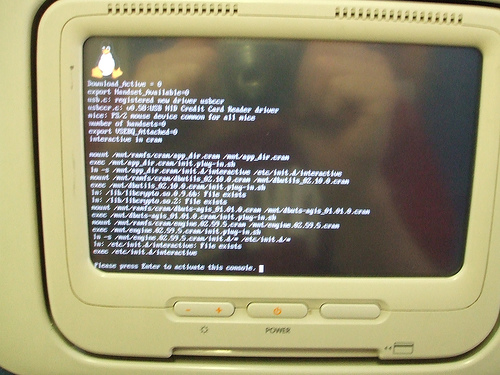They are usually forgotten, as they tend to see a lot less action than non-airport bound firefighters, but boy, do they have cool equipment to play with! Airport fire departments have some very tight performance parameters, basically, because when a huge piece of aluminium, titanium, passengers and fuel crashes and ignites on or near a runway, every second counts. That’s the reason this 40-ton baby accelerates from 0 to 80 Km/h (50mph) in around 25 seconds. In proportion to weight, this is faster than a 1997 McLaren F1, which hits 100 Km/h (60mph) in 3.3 seconds!
The Rosenbauer Panther 8×8 MA5 airport and rescue firefighting vehicle. Sporting a 1000 hp engine (yes, that is not a typo), it carries 12.5 tons of water, 1.5 tons of foam liquid, and up to 1 ton of NP powder. Full specs here. Up to three monitors (two mounted at the front, one top) give it a range from 25 meters up to 85 meters, all controlled from the cabin with joysticks and cameras. At 11 bars of pressure, the top monitor can empty the water tank in two minutes. The cabin controls look like something out of Star Wars.
Note the complex MFD control system for the hydraulics – so much for turning a wheel and having water come out a hose, right? While I did part-time work at Southend Airport, I was able to ride and operate a much smaller, much simpler, but equally fun Carmichael truck. Will post a pic when I find it and scan it (film rolls back then, the only thing digital in cameras was your finger).
Aviation
Fly regularly? Plan your seating ahead
While reading a post by Scoble on WiFi being present at the SF Giants stadium, I came across seatguru.com, a site dedicated to everything related with airliner seats. You can search by airline, then load seating maps for most of their fleets, and the best part – they have color-coded the seats, so you can quickly see what seats are good, and which ones can make you feel like spam-in-a-can (movie quote, The Right Stuff).
Additionally, there is some good info on amenities, laptop power arrangements and other tidbits. In all, very recommended for frequent travellers.
My personal recommendation is to grab the seats on the emergency exits, which by law have extra room between them and the seats in front. This can give you a very comfortable extra legroom if you travel coach. In order to be able to seat next to the emergency exits, you have to assume extra duties as a passenger, mainly being able to understand instructions given to you by flight attendants (i.e. “get out!”), and lift weights of up to 50lb.
The flight attendant will brief you on these duties, and let you know that if you don’t feel like taking the responsibility, you can move to another seat. When they ask you under which two circumstances you should not open the door, the answers are: a) if you are not instructed by a flight crew member to do so, and b) when there is a fire on your side of the aircraft. Answer them correctly and you may get an extra icecream during the flight (true story!)
My Boeing 767 runs Linux, and yours?
This was seen on a Boeing 767 while en route from Las Vegas to Atlanta, the flight being operated by Delta. Apparently, many people were having problems with their purchased movies, and so the crew decided to reset the system, provoking a nicely familiar sight.

Now we could all start making jokes about nmapping the plane, or trying to run Asterisk off a USB drive plugged into the management console, which by the way was accessible to anyone who wandered to the toilet and happened to look left. It had a nice big “Reset all” button too, two USB ports, and a gigabit etherenet RJ45. I just hope they don’t run a kernel with some remote_crash_plane() buffer overflow exploit…